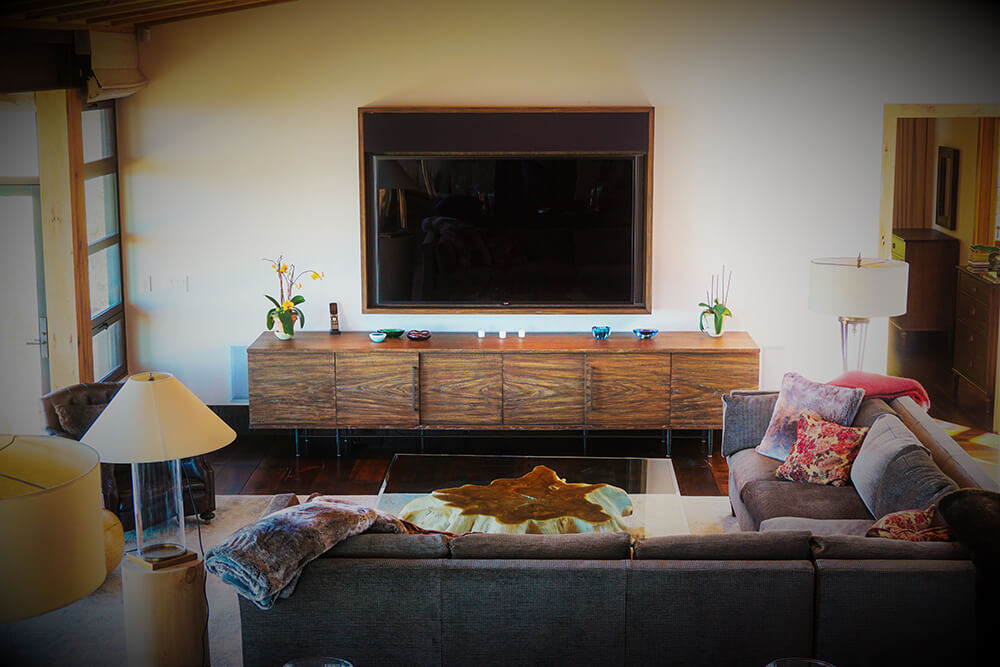Automated/Versatile Lighting Control
by George McKechnie
Nothing captures the range and flexibility of Smart Home living like automated Lighting Control. Smart Appliances may offer convenience, and Smart Thermostats comfort and economy. But a Smart Lighting Control system dramatically expands and improves the ways you can enjoy your home.
Range of Features. Here are some of the ways that lighting control can complement and expand your smart home lifestyle:
Aesthetics. Automatically illuminate architectural or landscape details outdoors—like gardens, water features, etc.—from sunset to bedtime, or beyond. Inside, use automated lighting to illuminate paintings, sculpture—whatever you choose, and whenever.
Setting the Mood. Multiple sources of illumination on separate dimmers can be programmed to create lighting scenes that set the stage for parties, movie time…or perhaps romance.
Security. Set up automated lighting to secure the perimeter of your property at night, then add motion detectors to discourage wildlife from invading the garden. Program a vacation mode to mimic the lighting patterns of your daily home activities while you’re away. Don’t give the burglars a chance!
Safety. Use automatic sensors to illuminate the grocery haul from garage to kitchen. And add low-level automated low-placed lighting to make midnight bathroom runs safe from tripping —without disturbing others.
Convenience. Use occupancy sensors to turn on closet and storage room lights when in use, and off once they’re unoccupied. Forgot that upstairs light? Don’t get up—just turn it off remotely …with your smart phone.
Drama. Program your universal remote to fade the lighting in your home theater as the show begins, and automatically bring it up when the credits roll. Might as well set up the shades to open and close automatically, too. It’s all part of the fun.
Remote Monitoring. While away from home, use your smartphone to check on or adjust your home lighting—plus shades, security settings, thermostats…you name it.
Task Lighting. Set up and control lights for specific tasks—food prep, studying, grooming pets—independent of surrounding illumination.
Conservation. Save money—and energy—with occupancy sensors, motion detectors, scene lighting, and vacation/away programming.
Scope of Installation. Choosing the right lighting control strategy will depend on your specific needs, your budget, and the overall scope of the work planned—is it a simple retrofit, open-wall renovation, or new construction.
Basic IoT Widgets. Some simple tasks—adding voice control for a table lamp, or time-of-day automation of porch lights—can be achieved with simple after-market devices. And if you’re tech-savvy, you might even want to do-it-yourself.
Combining Multiple Tasks. Program a universal remote to simplify your home theater experience by integrating the control of lights, shades, and AV components. Or use multiple lighting sources to create mood scenes using dedicated, wall-mounted keypads. These jobs typically require a specialist to design, install, and program an integrated system.
Whole Home Systems. New construction and major renovations provide opportunities for cost-effective whole house lighting control—designed and installed by licensed professionals.
Your Smart Home Lifestyle. To enjoy the greatest benefits of automated lighting control, the system must reflect the ways you and your family actually use and enjoy your home. How large is the house, and how many people (of what ages) share it? What kinds of household activities take place, and when and where do they occur? How do you entertain, and where? Do you use your outside spaces, and at what times of day?
These are the kinds of questions that can optimize the design and programming of smart home lighting control. The more carefully you plan, the more satisfied you will be with the results.
To learn more about matching smart home technologies to your lifestyle, visit SmartHomeGallery.com.
Copyright 2018 Sync My Home, Inc.


